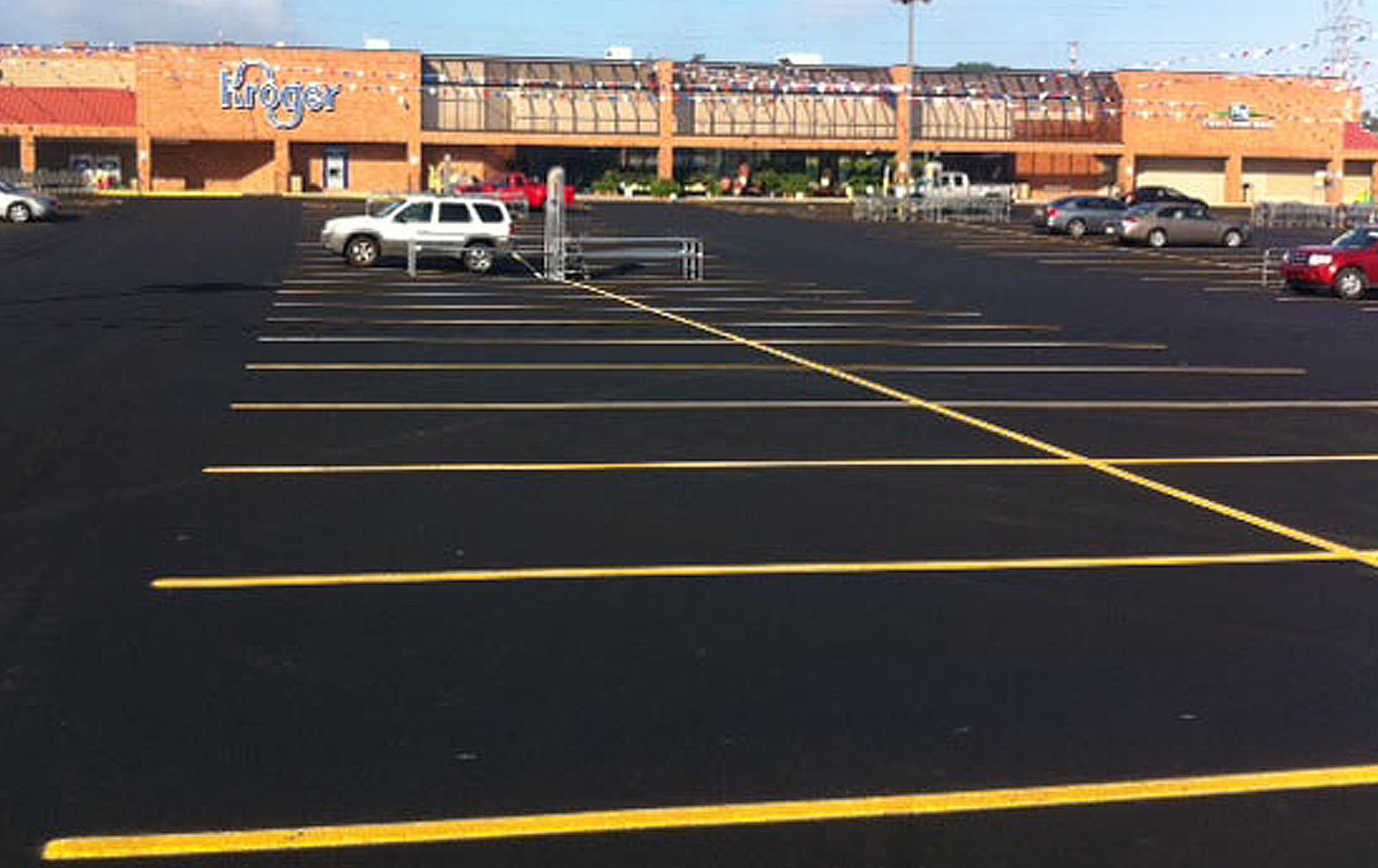Pavement Marking Basics
Once you have the perfect sealcoating or paving job complete, you will need your pavement marking. When it comes to parking layouts, there are strategies for efficiently organizing multiple indoor or outdoor parking spaces. Strategies to consider when laying out parking are: the directions of traffic, systems of either one or two way traffic, the angle of the spaces, the type of vehicles being parked and the inclusion of pedestrian walkways and landscape elements.
Typically, businesses will have a legacy layout that we can duplicate or modify to improve the flow of your area. When planning your sealcoating or pavement project, let us know and we can offer you options that will meet your needs and exceed your expectations.
What are the factors to consider in a parking lot layout?
The factors to consider in a parking lot layout include: parking lot size, pavement, parking space angles in consideration to level of vehicle turnover, accessibility requirements (ex. ramps), lighting design, landscaping, drainage, and overall traffic flow including that of pedestrians.
How do you design parking lots for buses and trucks?
Space efficiency (size and angle) is a primary concern for the design of parking lots for buses and trucks. Pavement thickness should be a focus when considering possible heavy loads from these vehicles. In an average parking lot, these heavier kinds of vehicles are typically designated to specific areas and will follow specific routes around the lot.
What is a parking management plan?
A parking management plan expresses the intended management of the use of parking on a certain property. These plans are typically in response to found specific parking and traffic issues. It often identifies developments or changes in policies, practices, and budgets for these implementations.



